Name Sam Gilliam | Role Artist | |
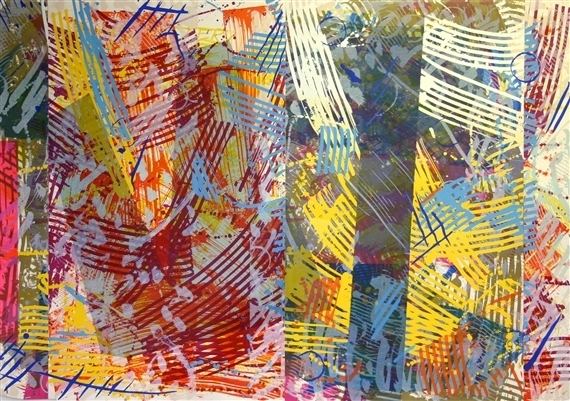 | ||
Artwork Manet II, Recitals, Sac 2, Water Surface, Ibis Similar People | ||
Meet sam gilliam
Sam Gilliam (born November 30, 1933) is a Color Field painter and lyrical abstractionist artist. Gilliam, an African American, is associated with the Washington Color School, a group of Washington, D.C. artists that developed a form of abstract art from color field painting in the 1950s and 1960s. His works have also been described as belonging to Abstract Expressionism and Lyrical Abstraction. He works on stretched, draped and wrapped canvas, and adds sculptural 3D elements. He is recognized as the first artist to introduce the idea of a draped, painted canvas hanging without stretcher bars around 1965, which was a major contribution to the Color Field School.
Contents
- Meet sam gilliam
- Sam gilliam fireflies ferris wheels
- Biography
- Career in the 1960s early 1970s
- Career in the 1970s and 1980s
- Education
- Recognition
- Personal life
- Selected museum collections
- Quotes
- References
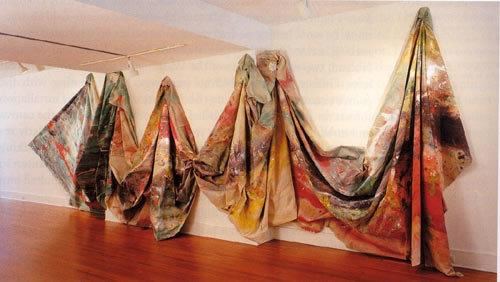
In his more recent work, Gilliam has worked with polypropylene, computer generated imaging, metallic and iridescent acrylics, handmade paper, aluminum, steel, plywood and plastic.
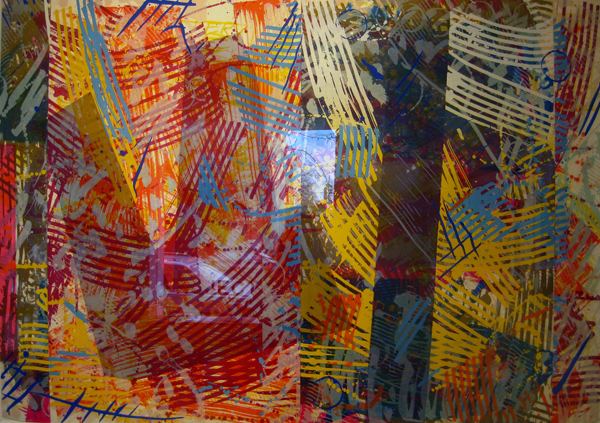
Sam gilliam fireflies ferris wheels
Biography
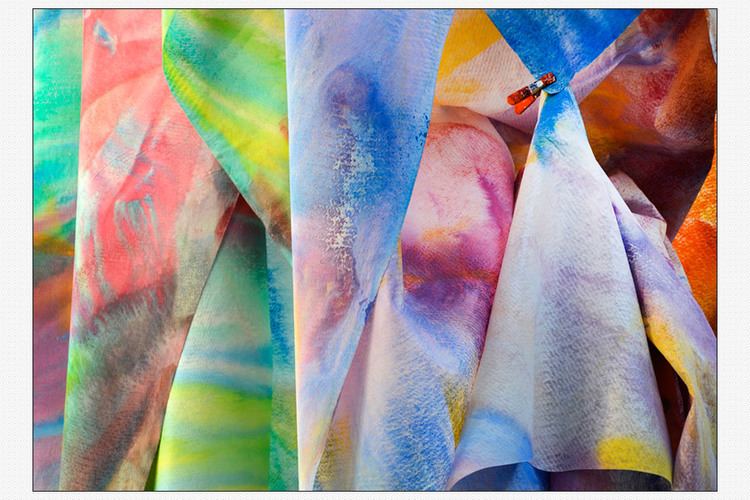
Sam Gilliam was born in Tupelo, Mississippi, the seventh of eight children born to Sam and Estery Gilliam. The Gilliams moved to Louisville, Kentucky, shortly after Sam was born. His father worked on the railroad, and his mother cared for the large family. As a child, Gilliam recalled wanted to be a cartoonist. In 1951, Gilliam graduated from Central High School in Louisville. He received his bachelor's (1951) and master's degree (1961) of Fine Arts at the University of Louisville. In 1955, Gilliam had his first solo exhibition at the University of Louisville. Gilliam also served in the United States Army from 1956 to 1958. Gilliam also taught art in public schools. In 1962, Gilliam moved to Washington, D.C. where he has lived ever since.
Career in the 1960s, early 1970s

In the 1960s, as the political and social front of America began to explode in all directions, the black artist began to take bold declarative initiatives, making definitive imagery, inspired by the specific conditions of the African American experience. Abstraction remained a critical issue for artists like Sam Gilliam. Gilliam's sense of color is modulated by his study of light, color, and its transformative and changing dynamics. He is most widely known for the large color-stained canvases he draped and suspended from the walls and ceilings during the late 1960s and early 1970s. Gilliam's early style developed from brooding figural abstractions into large paintings of flatly applied color, pushing Gilliam to eventually remove the easel aspect of painting by eliminating the stretcher.
Gilliam was influenced by German Expressionists such as Emil Nolde, Paul Klee and the American Bay Area Figurative School artist Nathan Oliveira. Early influences included Morris Louis and Kenneth Noland. He states that he found lots of clues on how to go about his work from Tatlin, Frank Stella, Hans Hofmann, Georges Braque, Pablo Picasso, and Paul Cézanne. In 1963, Thomas Downing, an artist who identified himself with the Washington Color School, introduced Gilliam to this new school of thought. Around 1965, Gilliam became the first painter to introduce the idea of the unsupported canvas. He was inspired to do this by observing laundry hanging outside his Washington studio. His drape paintings were suspended from ceilings, arranged on walls or floors, representing a sculptural, third dimension in painting. Gilliam states that his paintings are based on the fact that the framework of the painting is in real space. He is attracted to its power and the way it functions. Gilliam's draped canvases change in each environment they are arranged in and frequently he embellishes the works with metal, rocks, and wooden beams.
Career in the 1970s and 1980s
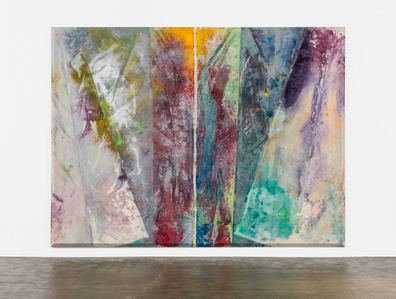
In 1975, Gilliam veered away from the draped canvases and became influenced by jazz musicians such as Miles Davis and John Coltrane. He started producing dynamic geometric collages, which he called "Black Paintings" due to the hue. Again, in the 1980s Gilliam's style changed dramatically to quilted paintings reminiscent of African patchwork quilts from his childhood. His most recent works are textured paintings that incorporate metal forms. Gilliam's ability to move beyond the draped canvas, coupled with his ability to adopt new series keeps the viewers interested and engaged. This has assured his prominence in the art world as an exciting and innovative contemporary painter.
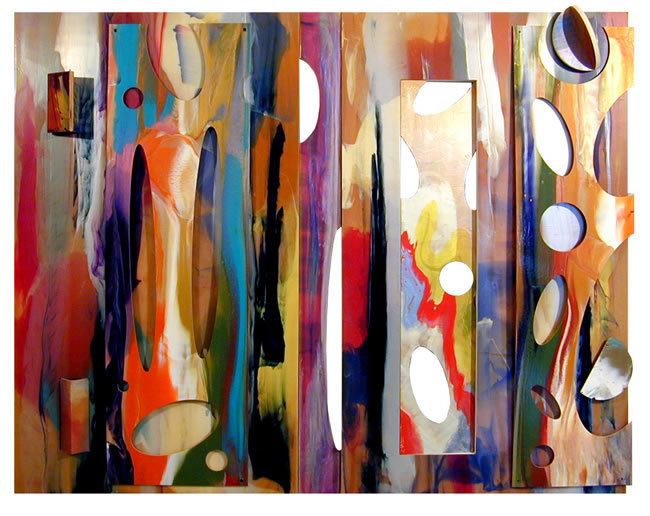
Gilliam taught for nearly a decade in the Washington public schools, and then at the Maryland Institute College of Art, and the University of Maryland, and for several years at Carnegie Mellon University in Pittsburgh, Pa. In addition, Gilliam still devotes time to conducting workshops, participating in panels, and delivering lectures in this country and abroad.
Education

Gilliam received his B.A. in fine art and his M.A. in painting from the University of Louisville in Kentucky. He has taught at the Corcoran School of Art, the Maryland Institute College of Art and Carnegie Mellon University.
Recognition
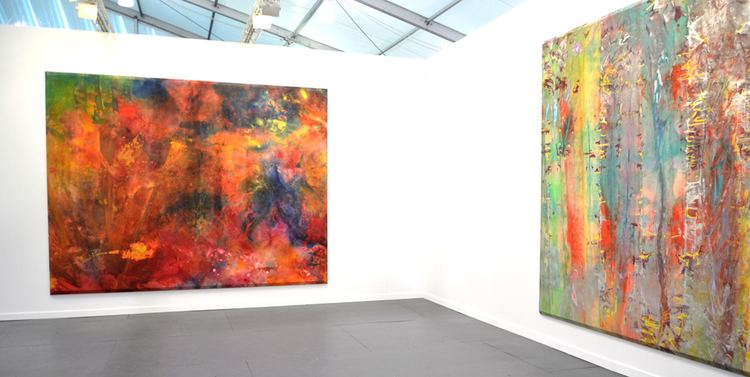
He has had many commissions, grants, awards, exhibitions and honorary doctorates. A major retrospective of Gilliam's work was held at the Corcoran Gallery of Art in 2005. He was named the 2006 University of Louisville Alumnus of the Year.
In 1987 he was selected by the Smithsonian Art Collectors Program to produce a print to celebrate the opening of the S. Dillon Ripley Center in the National Mall. He donated his talent to produce In Celebration, a 35-color limited-edition serigraph that highlighted his trademark use of color, and the sale of which benefitted the Smithsonian Associates, the continuing education branch of the larger Smithsonian Institution. In early 2009, he again donated his talents to the Smithsonian Associates to produce a 90-color serigraph entitled Museum Moment, which he describes as "a celebration of art"
In April 2003, a dedication of the installation of his work, "Matrix Red-Matrix Blue", was held at Rutgers Law School - Newark.
In May 2011, his work From a Model to a Rainbow was installed in the Metro Underpass at 4th and Cedar, NW.
In 2016, Gilliam was commissioned for a piece as part of the grand opening of the National Museum of African American History and Culture (NMAAHC).
Sam Gilliam will be participating in the 2017 Venice Biennale, Viva Arte Viva, May 13 - November 16, 2017.
Personal life
In 1962, he married Dorothy Butler, a Louisville native and the first African-American female columnist at The Washington Post. They divorced in the 1980s. His partner of more than 30 years, Annie Gawlak, owns the G Fine Art gallery in Washington DC. Gilliam lives in Washington D.C. and has a studio on 14th Street, NW, just north of Colorado Avenue.
Selected museum collections
Quotes
These direct quotes from the artist help describe him and/or his work:
"I am a better artist today in that I am obviously a better teacher. Whether I am teaching or making art, the process is fundamentally the same: I am creating."
"Only when making the work can I determine the many languages that form the planes on which it is to exist. Like abstract phrases the many intentions of the work (before an audience) passes through an intuitive sieve… The work was not planned, there are ploys, however, to the way it was laid out and then put together." 1996 –Sam Gilliam.
